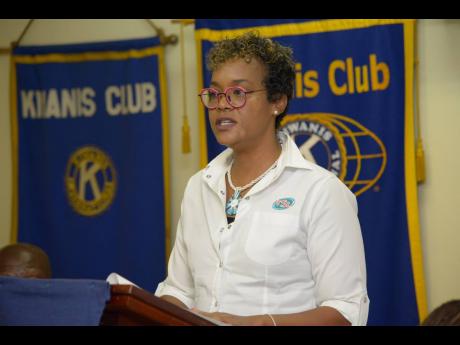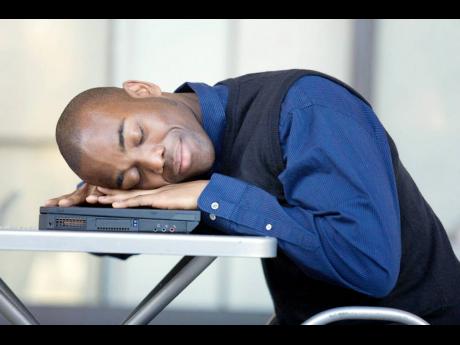Sick Building Sickness - A real health hazard that is increasing in Jamaica
Its genesis can be traced to the crisis of the 1970s when, in an effort to conserve energy, builders and regulatory authorities sought to button-up buildings to save on fuel for heating and air conditioning. Many buildings, therefore, became virtually airtight.
In many buildings, airflow was decreased from 20- to 30-cubic-foot per person to five-to-three-cubic-foot per person, which led to lower ventilation capacities, indoor accumulation of air pollutants, increased exposure of occupants and resultantly compromised health.
Indoor air pollution sources also increased, due to the use of new office equipment, decoration, and facilities. Modern office equipment such as laser printers, fax machines, copiers, etc., also produce air pollutants, and so, over time, the world began to awake to acknowledge that Sick Building Sickness (SBS) was indeed real.
“It is the cause of illnesses that disrupt our productive life and the very health of our people,” noted Dr Wendy-Gaye Thomas, group technical manager of Technical Solutions Limited.
In a discussion on the topic ‘Sick Buildings … A Hazard to Health’, she declared that there has been a significant increase in the number of cases of respiratory or flu-like illnesses in Jamaica in recent times.
Dr Thomas also warned that persons should not take flu symptoms lightly, as one culprit could be the building in which they work.
“I speak of a phenomenon called Sick Building Syndrome,” she stated. “A 1984 World Health Organization report suggested that up to 30 per cent of new and remodelled buildings worldwide may be the subject of complaints related to poor indoor air quality.”
Most available studies on the subject estimate that the average adult will spend over 90,000 hours in an office or other work environment over his or her lifetime. That is equivalent to 3,750 days or a little over 10 years.
“These studies have been conducted with persons in the North American environment, but increasingly, we can extrapolate to our local situation, and I might bet that among executives here – and elsewhere – the figures are not that far off,” the biochemist and medical doctor shared.
“So imagine a 10-year sentence to the building where you work, to spend the equivalent of 10 full years there with no other exposure to the outside, except maybe a window or a terrace or balcony.”
She added, “And then imagine that said building is flush with mould and other airborne pathogens, as well as chemicals of varying levels of toxicity. Day in, day out, that’s what affects your life. I seriously doubt many of us would survive such a sentence.”
NOT EASY TO DIAGNOSE
Sick Building Sickness is admittedly not so easy to diagnose and poor ventilation is one of the leading overall causes. Inadequate airflow itself leads to the formation and growth of mould, which adversely affects the respiratory system. Droppings and secretions from insects and other animals also contribute to toxicity.
“But also there is an issue with chemical contaminants from indoor sources which may emit volatile organic compounds (VOCs), some of which are known carcinogens, such as cleaning agents, carpeting, upholstery and pesticides that are causing persons to develop respiratory and other infections. Ozone from printers and other office machines are included in that category,” Dr Thomas pointed out.
Then again, there is the issue of asbestos in some of the older buildings which constitute the work environment.
Some people regularly work 14-16-hour stretches, some only leaving to get a change of clothes, and there are some who may circumvent even that by keeping spare clothing at the workplace and utilising office showers. So what are you actually at risk of in that “long-term sentence” in a sick building?
COMMON SYMPTOMS OF SBS
Some of the common symptoms of SBS, Dr Thomas explained, include:
- Sudden and severe headaches.
- Runny nose and eyes.
- Dry, itchy skin.
- Mentally, a great difficulty in concentrating.
- Overall feeling of tiredness or being drained.
Sick building syndrome is most common in open-plan offices, but it is common in any building. But beyond the symptoms, what are the cumulative effects?
Of course, there is asthma and other pulmonary conditions, bronchitis and the various forms of pneumonia which can still, in some cases, be fatal. There is also now increased information that the presence of contaminants in the workspace can contribute to lung cancer, when in fact the person may not even be a smoker.
If 20 per cent of the workforce has symptoms, including:
- watering eyes;
- hoarseness;
- headaches;
- dry, itchy skin;
- dizziness;
- nausea;
- heart palpitations;
- miscarriages;
- shortness of breath;
- nosebleeds;
- chronic fatigue;
- mental fogginess;
- tremors;
- swelling of legs; or
- cancer
The workplace may be labelled a ‘sick building’. The telling factor is if the symptoms ease when workers are at home or on vacation.
INCREASED REPORTS IN MANCHESTER
“There have also been recent reports of Sick Building Syndrome in a number of facilities in Manchester. A study conducted by Northern Caribbean University lecturer, Dian Camoy Griffiths, in 2015, confirmed that several residents of the parish reported getting ill because they were either living or working in buildings deemed to have conditions common to ‘sick buildings’,” Dr Thomas disclosed.
“In addition, also in 2015, there were reports that several students and staff at The University of the West Indies had become ill; the causative factor was traced to mould.”
… Solving the Sick Building Sickness problem
So how do we solve the Sick Building Sickness (SBS) problem? The first thing to realize is that it’s not a “one-shot” deal, that is, it’s not simply a case of hiring someone to come in with a team to sweep through and rid the building of offending substances. The mould and other factors that cause the illness had built up, in most cases, over time – a lot of the buildings are older than 50 years and were not subject to stringent building code regulations.
According to Dr. Wendy-Gaye Thomas, Group Technical Manager of Technical Solutions Limited, the first step is to carry out a thorough occupational health and safety risk assessment to determine what exactly is present in a particular building that may be triggering multiple cases of respiratory and other health complaints.
In fact, Technological Solutions Limited routinely carries out occupational health and safety inspections among a number of establishments to identify existing and potential risks or hazards to workers; and assist with the implementation of corrective actions and preventive strategies to prevent future recurrence of occupational diseases and accidents.
Proper ventilation is paramount and ensuring that air condition units are well serviced and not re-circulating poor quality air is a good start. Generally, if more clean air can circulate throughout the building while simultaneously preventing growth of mould, which itself is primarily an indicator of moisture, then the likelihood of SBS is significantly lower.
Dr Thomas is, however, warning against a rush to judgment in declaring a building ‘sick’.
“One person does not a sick building syndrome make. You have to have a situation where it’s enough persons in a designated area, it doesn’t have to be the entire building, that are presenting with non-specific symptoms that exacerbate when they are in that particular area and improve when they are away,” she noted.
“There are a lot of people with allergies and sinus infections and with the increase in temperature and humidity, there are likely to be more symptoms which may be misread for SBS. So we must strenuously guard against that, even as we move to safeguard health.”




